Multifamily Blogs
7 Trends that Influenced Resident Retention & Acquisition in 2022
7 Trends that Influenced Resident Retention & Acquisition in 2022
As we kickstart 2023, it’s likely that you’re brainstorming ways to keep two components of your business strong: resident retention and resident acquisition.
A good starting point is to look at the trends that influenced retention and acquisition in 2022. That’s because there were several dynamics that influenced these areas that are still going to affect your business in the New Year.
One thing that’s clear is that well-managed living experiences lead to higher rates of resident retention and acquisition. And, there’s research to prove it.
In 2022, over 600 multifamily professionals talked resident experience management and shared the tactics they use for retention and acquisition. Based on those findings, here’s a rundown of the trends we saw in 2022 that are shaping the market heading into 2023.
#1: Turnover costs were about $4,000 per resident
One of the biggest findings in 2022 was how expensive it is to lose one resident. Turnover costs were (and still are) the top reason to focus on improving resident retention.
Prices soared on almost everything in 2022. And turnover costs were not spared. Here’s the average turnover cost in 2022 compared with 2021.
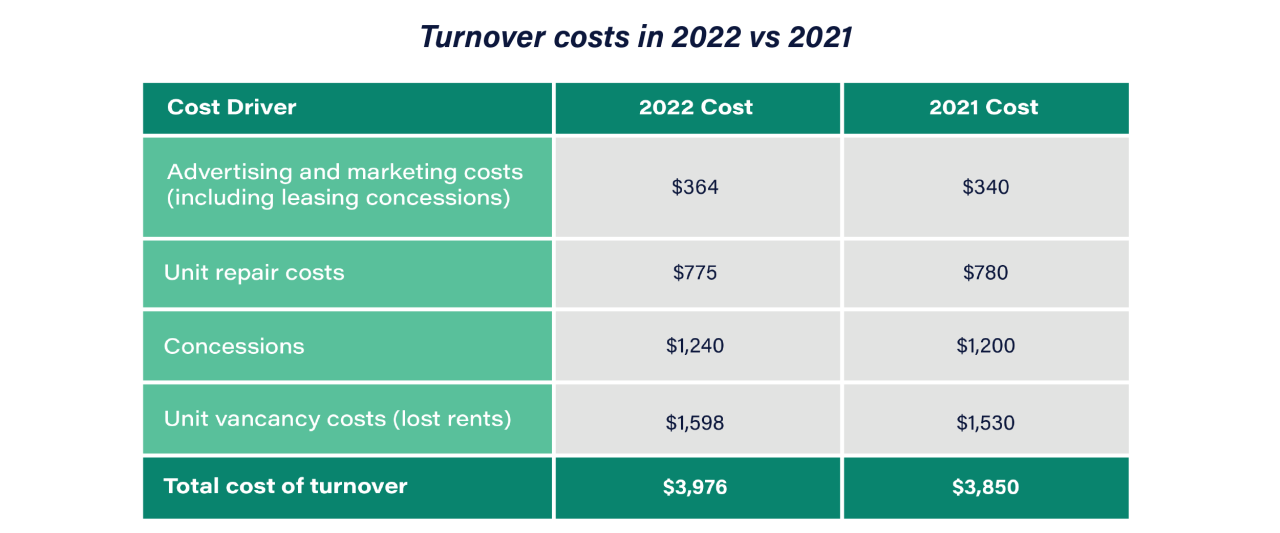
You read that right. Each time you lose a resident, the costs of turning their unit are about $4,000! That really adds up if your communities don’t have great retention rates.
And given that costs still seem to be rising, it wouldn’t be surprising if this number increased even more in 2023.
#2: 94% of companies reported dedicated personnel to manage the resident experience
Resident experience management has increasingly become a top priority for many companies. One way we know this is by how many companies have employees solely dedicated to managing this function. In fact, 94% of companies do!

Having someone to manage resident experience is a relatively new property management trend. One in 4 companies say their company added the position in the past year.
What’s particularly interesting is that companies who have had these positions in place for longer periods of time have higher resident retention rates.
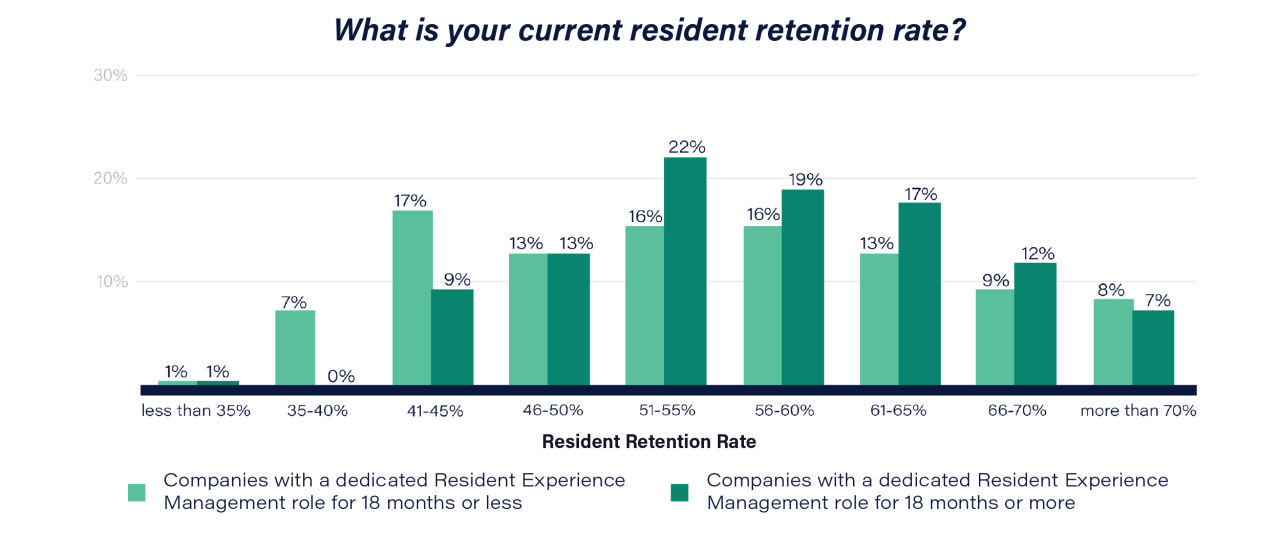
#3: Fewer companies had resident retention goals in 2022 than in 2021
In 2021, almost all multifamily companies (94%) said they had a resident retention goal. With demand for multifamily apartments at an all-time high, did companies forgo retention goals?
As it turns out, many companies did. This past year, only 76% of companies had a retention goal.

That's risky.
That’s because 82% say they want to move within the next year. And, as mentioned earlier, turnover costs are extremely high. Companies need a plan to minimize a potentially sharp increase in turnover. Just like budgets are useful to prevent costs from spiraling out of control, so too are retention goals for keeping turnover rates to a minimum.
#4: Companies were acutely aware of the importance of online reviews
Renters posting reviews about their apartment community is by no means a new property management trend. But, the importance of online reviews is growing.
For renters, reading reviews is a top way of finding a place to live. In fact, 69% read reviews when they are looking for a new apartment. And if reviews for a property aren’t great, 79% of renters won’t visit it.
But how do apartment operators feel about them? Renters and property managers align on the importance of online reviews. In fact, not a single survey respondent said it wasn’t important.
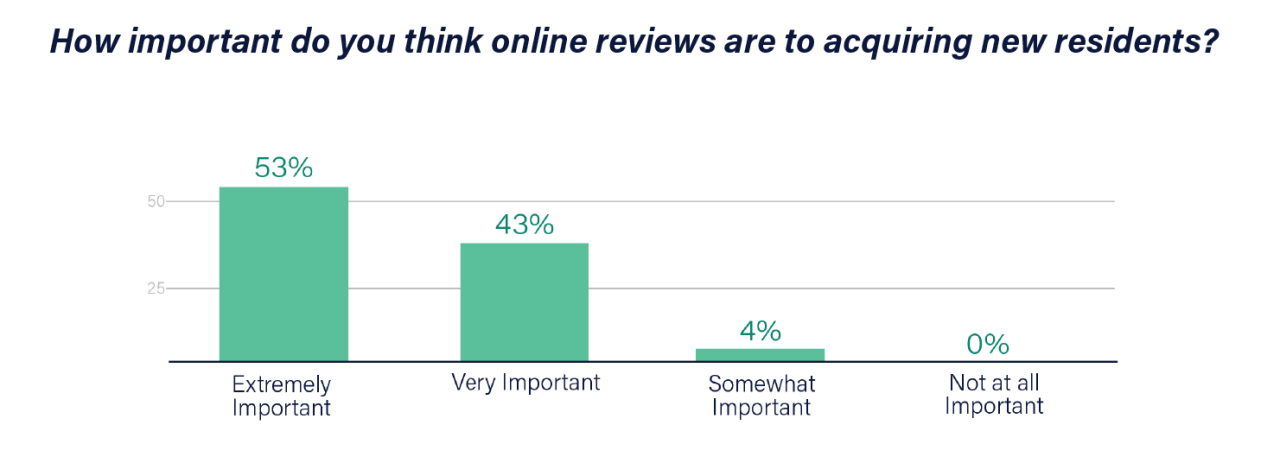
#5: Companies did not prioritize staff satisfaction and retention
In this unique market, it’s interesting to know how leaders prioritize what their business focuses on. So what were the top goals in 2022?
Resident retention came out on top. But probably the most startling finding was that staff retention and satisfaction ranked last.
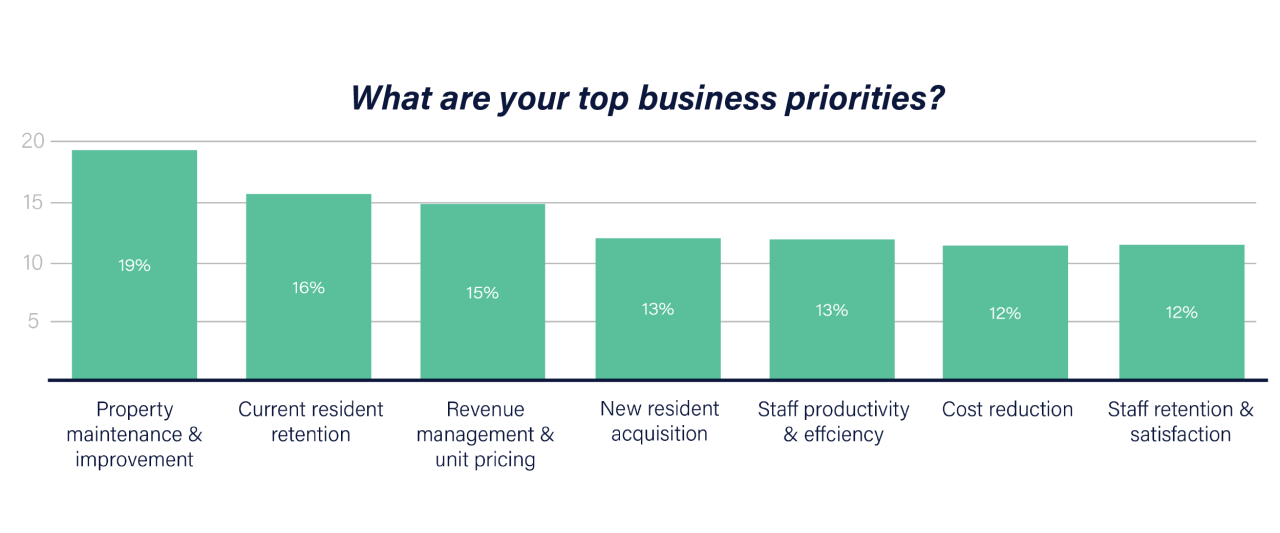
Why is this so surprising? For one, your associates are a critical piece of the resident experience. Happy and fulfilled employees are far more likely to be attentive and courteous to your residents than unhappy ones.
From a leasing standpoint, the disposition of your on-site associates clearly influences prospective renters. NAA reports that 20% of renters said their interactions with on-site staff had a strong influence on their renting decision. Furthermore, 55% said that staff caring about renters was the most important factor for selecting their apartment.
#6: Staff turnover was higher than ever and it hurt resident retention
In the property management world, job turnover is typically much higher than other industries. And with The Great Resignation leaving most industries short staffed, it was even harder to retain employees.
Half of companies had higher-than-average turnover among its employees.
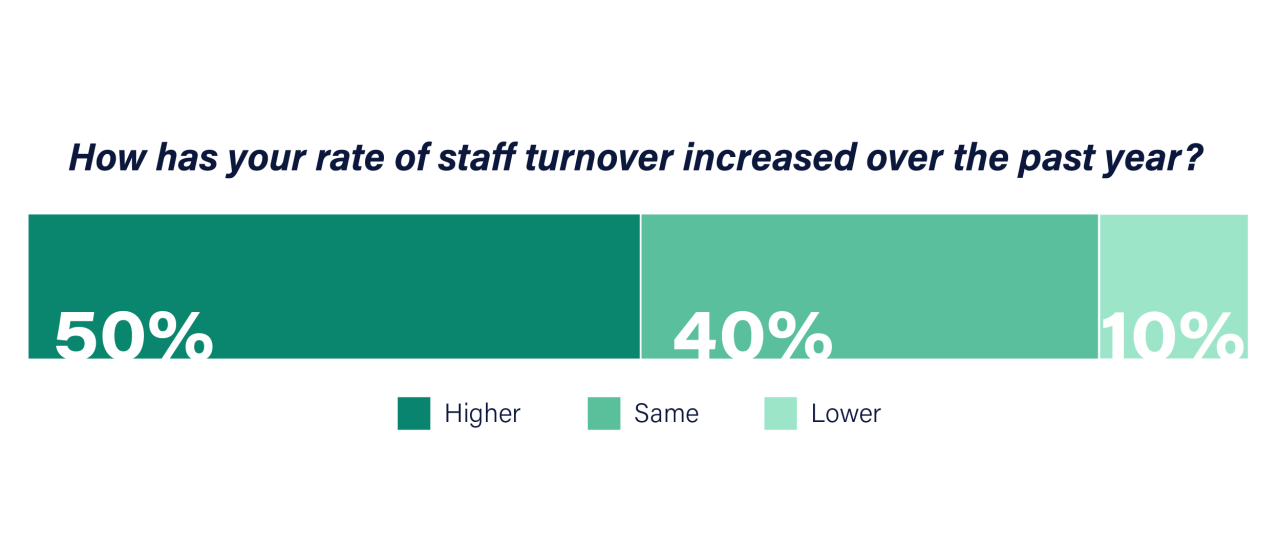
Resident retention rates were higher for companies with lower staff turnover
When communities are under staffed, it harms the resident experience. After all, fewer staff members means it takes longer to help residents. And receiving great customer service is an important piece of keeping residents happy.
Survey data proves this. Those with low staff turnover have higher resident retention rates. 1 in 4 retains over 70% of their residents.

This shows that companies should prioritize team member happiness in 2023. Without a full team of engaged employees, many parts of your business start to unravel.
Resident satisfaction is one area that takes a hit. Unfortunately, that negatively affects reputation and revenue, too. And since staffing is harder than ever, it’s clear that employee retention HAS to be prioritized in 2023. Otherwise, companies risk increasingly lower resident retention over time.
#7: Modern living features were the top reason renters renew their lease - and a reason they leave
There will always be reasons why renters move that are out of your control. Perhaps they are getting married. Or maybe they are moving to a new town.
There are also many reasons why renters leave that ARE in a company’s control. And we wanted to know which property management trend is the most effective for getting renters to renew a lease.
Property managers ranked in order of importance the reasons renters choose to renew their lease. They also ranked why renters leave. The cause for both is the same: “Modern Living Features.”
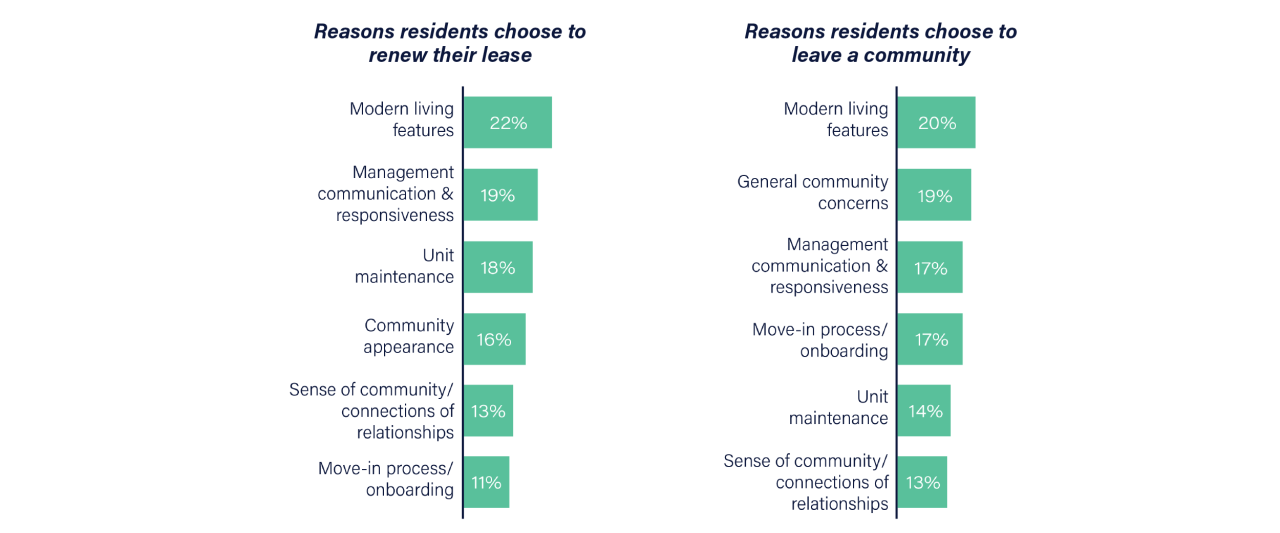
“Modern living features” is a broad category. It includes everything from how your community looks, to unit features, to the building’s technology. But clearly, having modern living features in your communities will help attract more renters in 2023. And the more outdated your community, the less likely you will retain residents.
Prioritizing resident living experiences in 2023
It's evident that there's a serious business case to maintain high resident retention rates. And 2023 will be a critical time to meet or exceed your residents’ expectations. As the market begins to cool, renters are taking stock of what they’re receiving in their community. If they feel they are paying in excess of what their community delivers, there’s a strong likelihood they will move on when their leases are up. Unfortunately, this impacts acquisition too. Underwhelmed residents do not post positive online reviews, making your communities less desirable to prospective renters.


